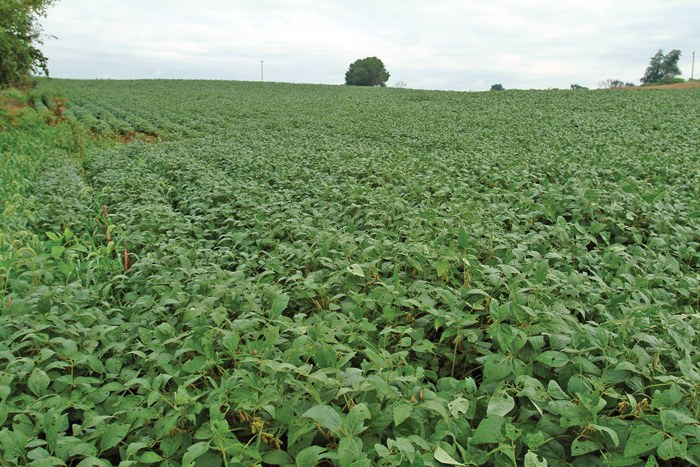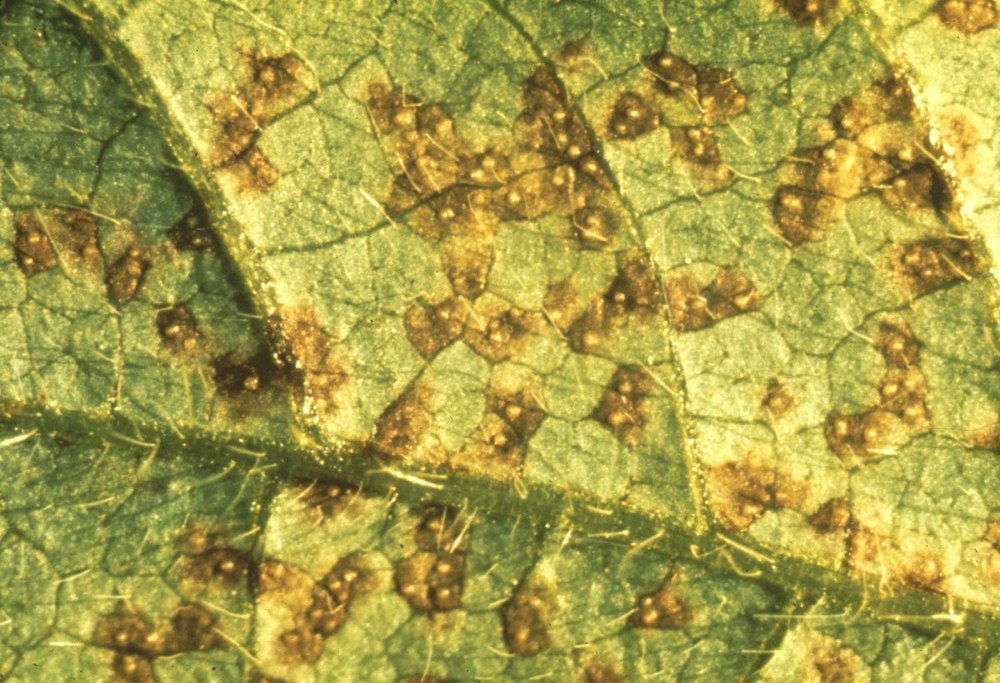
Soybean field
Soybean rust (Phakopsora pachyrhizi) has demonstrated enormous potential for aerial dispersal. It has spread to soybean fields in Hawaii (1994), then Africa (1996), Paraguay and Brazil (2001), Argentina (2002), Bolivia (2003), Columbia and Uruguay (2004). In November 2004, P. pachyrhizi was detected for the first time in the southern United States.
- Environmental conditions that promote healthy growth and high yield in a soybean crop are also the conditions most suitable for the development of soybean rust.
 Infection under favorable temperature and moisture conditions takes place within 6 hours and uredinia can develop in lesions 5 to 8 days afterwards. The first urediniospores can be produced as early as 9 days after infection, and spore production can continue on a uredinium for up to 3 weeks.
Infection under favorable temperature and moisture conditions takes place within 6 hours and uredinia can develop in lesions 5 to 8 days afterwards. The first urediniospores can be produced as early as 9 days after infection, and spore production can continue on a uredinium for up to 3 weeks.
- Spores can remain viable for almost two months if humidity is high and ultraviolet radiation exposure is low.
 New uredinia can grow with a pustule and as a result, spores may be continually released from a pustule for up to 15 weeks as long as moisture and moderate temperatures are present.
New uredinia can grow with a pustule and as a result, spores may be continually released from a pustule for up to 15 weeks as long as moisture and moderate temperatures are present.

The fungus infects over 95 species of plants including many wild and edible legumes. These alternative hosts can serve as reservoirs for the pathogen when the soybean is not present, where inoculum may build up.
 Roughly 300 million spores may be produced per plant. During the height of an infection a soybean field can release ca. 1000 trillion spores/ha/day.
Roughly 300 million spores may be produced per plant. During the height of an infection a soybean field can release ca. 1000 trillion spores/ha/day.
- Symptoms of soybean rust are usually first observed on the lower leaves on a soybean plant as water-soaked spots which progress to tan or reddish brown lesions that contain rust pustules. These pustules are most pronounced and numerous in the underside of leaves. Infected foliage turns bronze/yellow and these patches can clearly be seen in disease fields. Waling into severely infected patches can release viable clouds of rust spores. Premature defoliation occurs as a result of infection and this affects the number of pods and the seed weight.

(Photo by Jose Tadaski Yorinori)
Life cycle of soybean rust by Annalisa Ariatti

